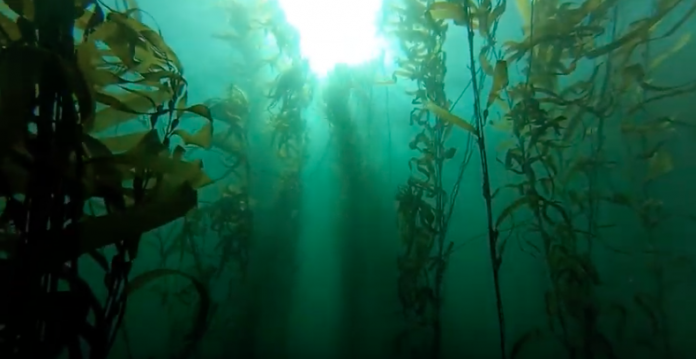Tassal investigating the potential of native kelp plantations on its aquaculture leases. Of all the species, Giant kelp stands out for its fast growing nature.
Australia’s FRDC (Fisheries Research and Development Corporation) reports in FISH Magazine that Tassal has been investigating how kelp could take up nitrogen generated as part of the process of fish farming. This method of combining complementary marine crops is known as integrated, multi-trophic aquaculture.
The publication talked to Craig Sanderson, a marine biologist who has been leading Tassal’s research in this area for the past three years. Craig Sanderson said that earlier research indicated that nitrogen originating from fish pens is quickly dispersed in the water column. It is difficult to detect any elevation in nitrogen levels more than 100 metres down-current of fish pens.
“So if kelp is grown next to pens, the front few rows might benefit from additional nitrogen, but as you move further away there would be less benefit,” he said.
Of more than 1000 seaweed species native to Tasmania, Giant Kelp has been singled out to farm as it’s amongst one most of the easily cultivated and fastest growing of the species. In just three years, some have already reached up to six metres. In the article, the FDRC go into more detail about the process’ that are involved in growing the seaweed.
In January SalmonBusiness reported that Tassal will teaming up with Tasmanian seaweed specialists to trial seaweed farming on across their sites.
At the time Dr Sanderson told the publication that it was a “win-win” situation, with the macroalgae extracting nutrients from the ocean, enhancing marine habitats, and producing edible seaweeds and alginates for industrial uses.
“In 2020 they are forecasting that worldwide, seaweeds are going to be a $20 billion industry,” Sanderson said.

